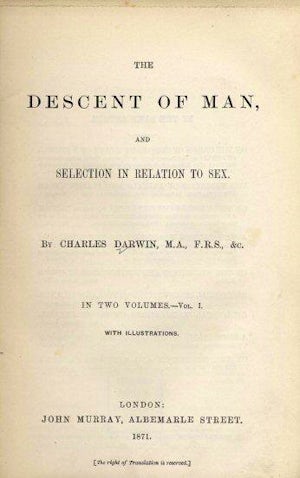1889. Francis Galton publishes his book Natural Inheritance. The book is considered "the foundation stone of modern biometrics" (UCL, 2008 ; Reeve, 2001). It attempted to identify personal attributes that were "vital statistics" of an individual human being (UCL, 2008).
Natural Inheritance, although written for general audiences, was Galton's most technical book, and used statistics to try and quantify the contribution of ancestors to their offspring (Curators, 2012 ; Reeve, 2001). It concluded that characteristics of any population may remain statistically identical in successive generation, assuming the population remains at "harmony" with its environment (Galton, 1889, p.192). Galton also concluded that:
"If one of the couples consist of two gifted members of a poor stock, and the other of two ordinary members of a gifted stock, the difference between them will betray itself in their offspring. The children of the former will tend to regress ; those of the latter will not." (Galton, 1889, p.196)
Galton used fifteen years of research conducted at Galton's Anthropometric Laboratory to write Natural Inheritance (UCL, 2008). He examined features such as stature, eye colour, "artistic faculty", and disease (Galton, 1889).
The book was met with large criticism upon its publication, including by Galton supporters such as Karl Pearson (Curators, 2012). It was largely critiqued due to the use of overly simplistic statistical methodology, in spite of being Galton's most technical work (Curators, 2012).
This book has entered the public domain and may be read online here.
-Colette Leung
Reeve, E. (Ed.). (2001). Encyclopedia of Genetics. New York: Fitzroy Dearborn Publishers.
Curators of the University of Missouri. (2012). Francis Galton: Father of the British Eugenics Movement. Retrieved from: https://library.missouri.edu/exhibits/eugenics/galton.htm
Galton, F. (1889). Natural Inheritance. New York: MacMillan.
UCL. (2008). Natural Inheritance. Retrieved from: http://www.ucl.ac.uk/news/ucl-views/0809/naturalinheritance
 1869:
Galton publishes Hereditary Genius
1869:
Galton publishes Hereditary Genius
 1871:
Charles Darwin publishes The Descent of Man
1871:
Charles Darwin publishes The Descent of Man